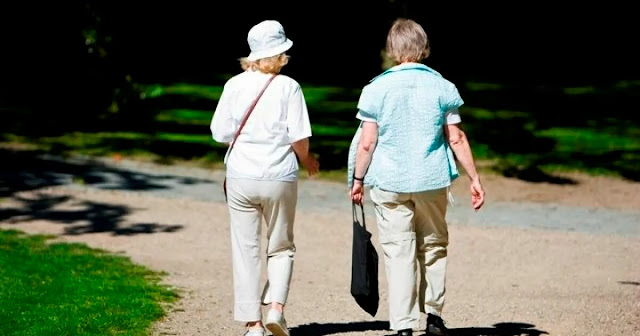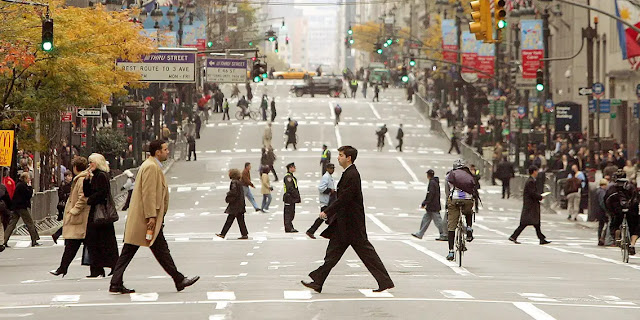It's no stranger, a short walk after a meal can help improve digestion. This is because the body's organs are still actively working to digest food at that time. The movement of walking can stimulate the stomach and intestines.
Low to moderate physical activity after eating has a protective effect on the gastrointestinal tract. That way, it can help prevent diseases such as peptic ulcers, heartburn, irritable bowel syndrome, diverticular disease, constipation, and colorectal cancer, quoted from various sources.
Research shows that walking for 15 minutes after eating can reduce blood sugar levels, which can help prevent complications such as type 2 diabetes.
Citing CNA Lifestyle, in a meta-analysis, recently published in the journal Sports Medicine, researchers looked at the results of seven studies comparing the effects of sitting versus standing or walking on measures of heart health. These include insulin and blood sugar levels.
Exercising after a meal, such as walking, can prevent excessive blood sugar spikes. They found that a light walk after eating, at least two to five minutes, had a significant effect on moderating blood sugar levels.
"Every little thing you do will have a benefit, even if it's a small step," said Dr. Keshaw Patel, a cardiologist at Houston Methodist Hospital who was not involved in the study.
Blood Sugar Level
In the five studies evaluated by the journal Sports Medicine, none of the participants had prediabetes or type 2 diabetes. The remaining two studies looked at people with and without such diseases. Participants were then asked to stand or walk for two to five minutes every 20-30 minutes for the entire day.
All seven studies showed that just a few minutes of light-intensity walking after a meal was enough to significantly improve blood sugar levels, compared to those sitting in a chair or lying on the couch. When participants took a short walk, their blood sugar levels rose and fell gradually.
Glucose levels peak 30 minutes after eating. When you go for a walk around this time, it will be easier for your body to control your blood sugar. Thus, walking after meals keeps blood sugar under control and eliminates the risk of hyperglycemia (high blood sugar levels).
For people with diabetes, avoiding sharp fluctuations in blood sugar levels is an important component of managing their disease. It is also thought that sharp spikes and drops in blood sugar levels may contribute to developing type 2 diabetes.
Walking 60 to 90 Minutes Gives Best Results
Standing also helps lower blood sugar levels, though not like light walking. "Standing does have little benefit," said Aidan Buffey, a graduate student at the University of Limerick in Ireland and author of the paper. Compared to sitting or standing, "walking at a light intensity is a better intervention," he says.
That's because light walking requires more active muscle involvement than standing and using food fuel when there is a lot of food circulating in the bloodstream. "Your muscles will absorb some of that excess glucose," says Jessie Inchauspe, author of Glucose Revolution: The Life-Changing Power of Balancing Your Blood Sugar.
While light walking at any time is good for health, a short walk 60 to 90 minutes after a meal can be very useful in minimizing blood sugar spikes. This is because that's when blood sugar levels tend to peak. Inchauspe also recommends getting up to do homework or find other ways to move the body.
Mini-Walks Are More Practical During Weekdays
This short activity will also enhance other dietary changes people may make to help control their blood sugar levels. "Moving even a little bit is beneficial and can cause measurable changes, as this study shows, in markers of your health," said Dr Euan Ashley, a cardiologist at Stanford University who was not associated with the study.
Aidan Buffey, whose research focuses on physical activity interventions in the workplace environment, notes that walking for two to three minutes is more practical during the workday. People 'aren't going to get up and run on the treadmill or run around the office,' he says, but they can get coffee or even take a walk down the hall.
For people who work from home, he suggests taking a short walk around the house, between Zoom meetings or after lunch. The more we normalize mini-walks during the workday, the easier it will be to do so, says Buffey.
"If you're in a rigid environment, that's when difficulties may come," he says.
Patel warns that optimizing the benefits of physical activity lies in a chain. "It's a gradual effect of more activity, better health," he said. "Every extra step, every extra stand or brisk walk seems to have a benefit."




